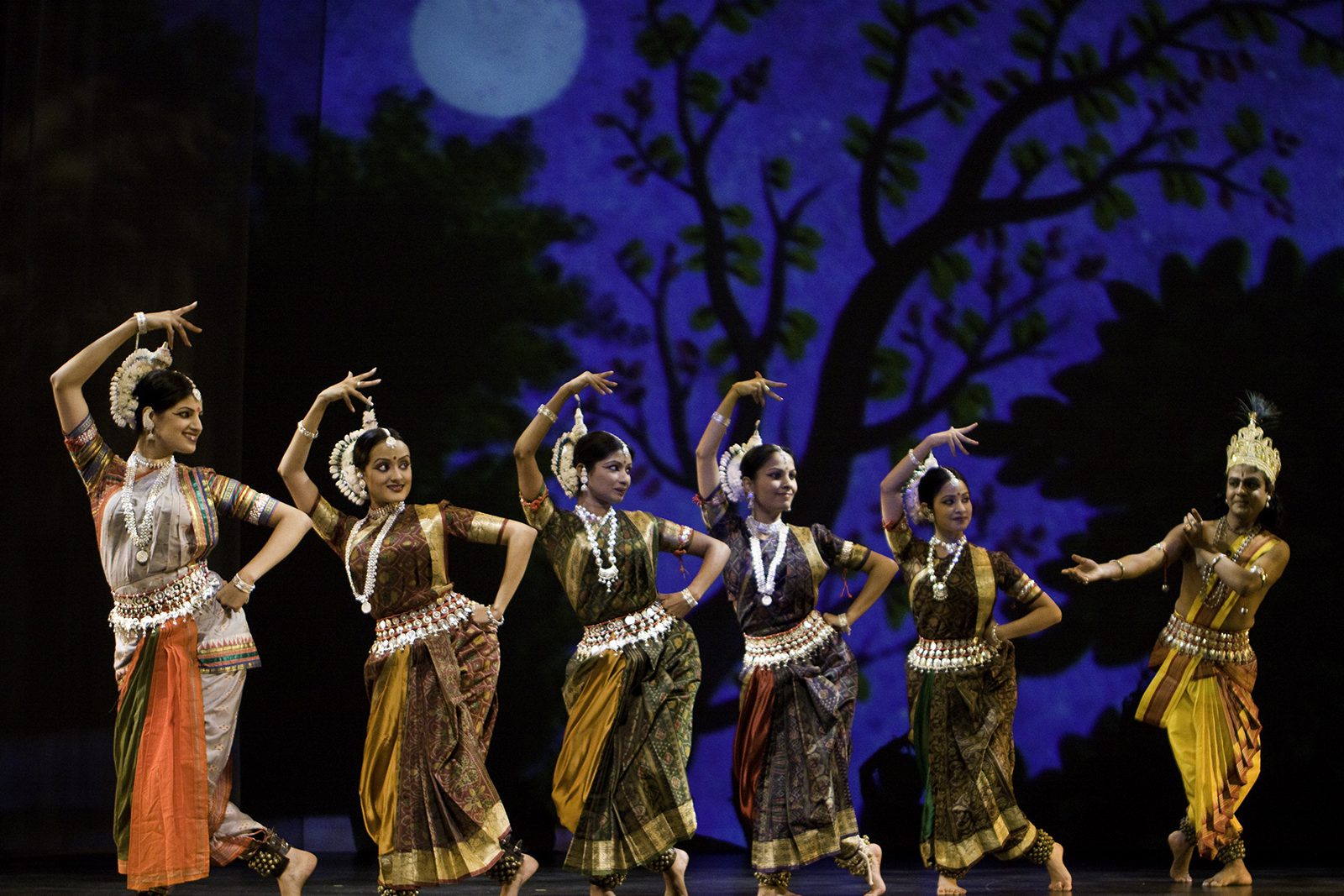When Menaka Thakkar received the Governor General’s Performing Arts Award for Lifetime Artistic Achievement last year, she accepted it as a call to action to fulfill the “lifetime” nature of the award as a teacher and performer. Now, she is pioneering online classes and performances in an effort to improve the accessibility of Indian dance. Through Menaka Thakkar Dance Company (MTDC) and school, the Nrtyakala Academy of Classical Indian Dance, a program of livestreamed master classes and performances will launch between September 18 and 20. The livestreams will include performances of Gita Govinda and Prince Rama in the Wilderness, as well as teaching demonstrations of Odissi and bharatanatyam.
MTDC Executive Director Rasesh Thakkar explains: “Accessibility was really denied to a large number of people in Canada. The concert prices in a big city like Toronto were above them. We wanted to address the question of affordability.” The diasporic nature of the South Asian community in Canada and travel demands on Menaka Thakkar and other master teachers were important barriers.
Successful livestreaming requires high-quality video and sound equipment, fast Internet connections on both ends and a slew of technicians. Nrtyakala has begun some online classes and uncovered the difficulties and successes of virtual dance education. The most basic problem is the lack of physical presence in a practice that revolves around precise steps and nuanced rhythms. The school manages this by offering virtual instruction only to dancers who have mastered the essentials of classical Indian dance. Students pursuing virtual classes in Canada are organized in groups of no more than seven or eight, who are also monitored and physically adjusted by local instructors.
For many of Thakkar’s students who grew up in Canada this project is a unique learning opportunity. Rasesh Thakkar emphasizes the educational impact of streamed performances. “In India, it is very natural for dance students to be in the culture. You are in daily acts of living, but there is also so much art around. Students on this end do not have that exposure, so watching is absolutely essential.”
While video allows for a more personal dynamic between audiences and performers, technology interferes unexpectedly at times. For example, the instant editing that takes place adds a layer of interpretation to the performances. Despite this technological tampering and other challenges in the streaming project, ultimately Thakkar’s company and school believe they have found a way to make classical Indian dance intimately and internationally accessible.
Tagged: Education, Indian, South Asian, Uncategorized, ON , Toronto





